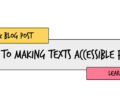
Note: This Q&A with SupportEd president Diane Staehr Fenner first appeared on educateiowa.gov June 18, 2019. That piece is titled Keynote: Ending the education gap for English learners can be done. Staehr Fenner was a keynote speaker at the 15th Annual Our Kids Summer Institute held during June 2019 in Ankeny, Iowa.
–
–
There’s an education gap for students who are English language learners (EL). Why is that?
 Diane Staehr Fenner: Much of the gap has to do with the way we tend to characterize it. We often only look at the achievement gap or how well current ELs do on end-of-year content assessments, such as English language arts or mathematics. By nature of ELs being assessed on their knowledge of complex content in English, a language they are still learning, those assessments in and of themselves lack validity and don’t give us a full picture of how ELs are doing. In only focusing on our ELs’ deficits – how well they do on content assessments taken in English – and not at their incremental growth in English, we only skim the surface and immediately see their deficits.
Diane Staehr Fenner: Much of the gap has to do with the way we tend to characterize it. We often only look at the achievement gap or how well current ELs do on end-of-year content assessments, such as English language arts or mathematics. By nature of ELs being assessed on their knowledge of complex content in English, a language they are still learning, those assessments in and of themselves lack validity and don’t give us a full picture of how ELs are doing. In only focusing on our ELs’ deficits – how well they do on content assessments taken in English – and not at their incremental growth in English, we only skim the surface and immediately see their deficits.
Instead, I prefer to get a sense more broadly of opportunity gaps for ELs and expand the lens to include how well ELs are supported in their content classes and given the same opportunities that non-ELs are given. For example, do all teachers of ELs see themselves as responsible for ELs’ academic language growth? Do all teachers of ELs concisely teach the background knowledge ELs need to make sense of what they read in content areas such as social studies? Are ELs considered for placement in advanced courses and gifted and talented programs?
I also think we need to look longitudinally at how well our former ELs perform once they exit English-as-Second-Language (ESL) services. It’s important for districts to keep track of how their ELs do after they gain proficiency in English. In some cases, they might outperform native English speakers on content tests, since they have developed a keen sense of metalinguistic awareness, problem-solving skills, and sheer persistence. We have to be aware of those EL success stories and shine a light on them.
–
What would proper EL instruction look like in a regular week? (Number of hours dedicated, etc.)
 Diane Staehr Fenner: I really wouldn’t want to prescribe a set number of hours ELs should receive when I don’t have a sense of the particular context. When my team and I work with districts to provide guidance on programming and scheduling, we like to get a sense of what’s happening in that district. We spend a few days observing classes using a research-based observation tool and talk with multiple teachers and administrators to learn more about the context. We also analyze the district’s extant data such as EL demographics, EL assessment data, and English language proficiency growth over time to get a fuller picture of EL instruction in the district. In addition, we analyze equity data, such as percentage of ELs in gifted and talented programs as well as dually identified ELs in special education.
Diane Staehr Fenner: I really wouldn’t want to prescribe a set number of hours ELs should receive when I don’t have a sense of the particular context. When my team and I work with districts to provide guidance on programming and scheduling, we like to get a sense of what’s happening in that district. We spend a few days observing classes using a research-based observation tool and talk with multiple teachers and administrators to learn more about the context. We also analyze the district’s extant data such as EL demographics, EL assessment data, and English language proficiency growth over time to get a fuller picture of EL instruction in the district. In addition, we analyze equity data, such as percentage of ELs in gifted and talented programs as well as dually identified ELs in special education.
We know from the research that dual language programs, in which ELs receive half a day of instruction in the home language and half a day in English, can be one of the best ways for ELs to acquire content, learn English, and also capitalize on their many assets. However, in many districts, dual language programs are not an option due to a more diverse EL population who speak multiple languages. In those cases, the focus should be on ensuring that ELs receive targeted support with language so they can acquire challenging content and learn academic language simultaneously. We also recommend co-teaching so that content and ESL teachers can fully leverage each other’s expertise. One tool we’ve developed at SupportEd is an infographic with recommendations in terms of scheduling ELs in schools with different-sized populations. You can find it here on our website.
–
Why do schools generally fall short in their endeavors?
 Diane Staehr Fenner: Actually, not all schools fall short in serving ELs. There are wonderful pockets of excellence that exist, and it’s essential that we recognize these schools and districts and share their strategies. I find that schools that have an understanding, knowledgeable administrator tend to “get it” in terms of how to best support ELs. Those leaders set the tone and make expectations clear that all teachers need to see themselves as teachers of ELs – not just the ESL teacher(s) – and celebrate ELs’ successes. Some of the most effective, inclusive administrators have been ESL teachers in the past or are ELs themselves.
Diane Staehr Fenner: Actually, not all schools fall short in serving ELs. There are wonderful pockets of excellence that exist, and it’s essential that we recognize these schools and districts and share their strategies. I find that schools that have an understanding, knowledgeable administrator tend to “get it” in terms of how to best support ELs. Those leaders set the tone and make expectations clear that all teachers need to see themselves as teachers of ELs – not just the ESL teacher(s) – and celebrate ELs’ successes. Some of the most effective, inclusive administrators have been ESL teachers in the past or are ELs themselves.
While not all schools fall short, many schools do have a way to go so that ELs as well as their families feel welcomed and valued. In those cases, we find the whole school doesn’t approach EL equity as being critical to the school’s culture. Also, individual teachers may not realize that it’s everyone’s job to ensure ELs are supported during instruction and that their families feel welcomed and valued. Our Culturally Responsive School Checklist can provide schools a chance to assess where they are in terms of culturally responsive instruction for ELs and setting goals for improvement.
The question is what to do if you’re a teacher in a situation in which your school is falling short. There are definitely ways to advocate for ELs’ equity in smaller ways, starting with your own classroom, content area, or grade level. You can find some additional resources to help you advocate for ELs, including my recent webinar on advocating for ELs here.
–

What can be done systemically to end the education gap?
Diane Staehr Fenner: First and foremost, all pre-service teachers need to be fully prepared to teach ELs. A handful of states do a better job than others at ensuring that all teachers are equipped with coursework about language acquisition and instructing ELs. In addition to pre-service coursework, schools and districts must provide meaningful, sustained, teacher-driven, job-embedded professional development with coaching so that all teachers are trained in EL instruction.
One tool that I would recommend to elevate ELs is to have an English Learner Master Plan in place. An EL Master Plan is a vehicle that brings together necessary elements of EL education and provides another way to support ELs’ equity. At SupportEd, we have been fortunate to work with several districts to create their first plan or revise their current plans. We’ve found that working on a Master Plan affords districts the space to have conversations with multiple stakeholders to approach EL education from a more holistic place.
–
What can individual teachers do to end the education gap?
 Diane Staehr Fenner: While it’s wonderful when districts come together and collaborate around EL equity, I recognize that such a scenario is not always the case. Individual teachers should first and foremost recognize that they can have a huge, positive impact on ELs even if it seems like the system as a whole is stacked against them. Individual teachers can join forces with other colleagues who also wish to better support ELs. Once teachers are noting progress with ELs, they may feel more confident to approach administrators to gain their support. Even though it may be easy to fall into a deficit mindset, I’d always recommend approaching inequities with an assets-based perspective of ELs’ strengths.
Diane Staehr Fenner: While it’s wonderful when districts come together and collaborate around EL equity, I recognize that such a scenario is not always the case. Individual teachers should first and foremost recognize that they can have a huge, positive impact on ELs even if it seems like the system as a whole is stacked against them. Individual teachers can join forces with other colleagues who also wish to better support ELs. Once teachers are noting progress with ELs, they may feel more confident to approach administrators to gain their support. Even though it may be easy to fall into a deficit mindset, I’d always recommend approaching inequities with an assets-based perspective of ELs’ strengths.
If there is no immediate support at the school and/or if teachers live in a more rural area, teachers can also go online to search out affirming EL communities. I’ve been amazed at the camaraderie and support that can be found in such communities as #ELLChat_BkClub on Twitter and the Advocating for ELLs Facebook page. I’ve reached out to these online colleagues for resources and suggestions, and I’m always offered a wealth of information. Of course, I also recommend the EL resources from the Colorín Colorado, including their advocacy and leadership page.
–
–
Find a link to Diane Staehr Fenner’s bio here.


